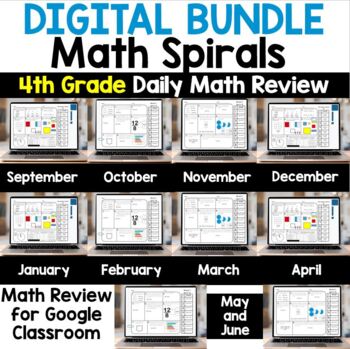BUNDLE of Digital Math Spiral Reviews for Google Classroom: Daily Math 4th Grade
- Google Drive™ folder

Products in this Bundle (9)
showing 1-5 of 9 products
Description
We all know that we need to continue spiraling the concepts we taught so the kiddos don't forget this material, which is why I created this math spiral review bundle. This packet is meant to be used with Google Classroom and Google Slides, a quick and easy way to get your kids reviewing previous concepts each day digitally.
Please note that this is the 4th grade version. For the third grade bundle, click here.
September, October, November, December, January, February, March, April, and May are included in the pack.
The questions each day are very similar from day to day, so kids can continue improving and practicing the same skills each day over the course of each month.
Also included is a data tracking page that you may want to print at the end of your students’ packets (this can also be filled in digitally). After completing each day’s spiral, students can shade in the tracking sheet to help see areas of strength and weakness. This is also available digitally for students in this pack.
Thanks for looking!
-Dan M.




